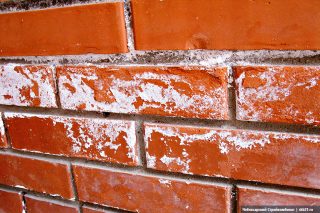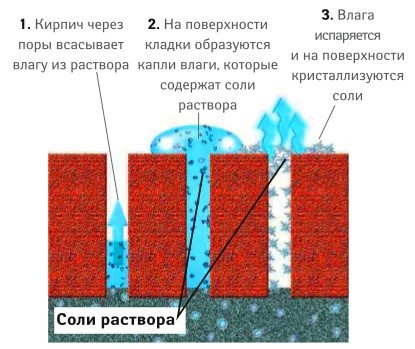Efflorescence on brick can appear on the walls of houses several months after the completion of construction. Most often, white stains appear as a result of a violation of masonry technology or the wrong choice of building materials. Before starting construction, you need to find out how to prevent staining or be prepared to eliminate the consequences.
The nature of the phenomenon
The most common efflorescence-forming substances:
- calcium sulfate is part of the brick;
- sodium and potassium sulfates are formed by chemical interaction of clay, silicate mixture and cement;
- calcium, sodium, potassium carbonates and calcium hydroxide are found in cement.
Efflorescences appear due to the content of sodium or potassium chloride, iron and magnesium oxides in building materials.
While the masonry is wet and the mortar has not gained full strength, the stains are not visible, but measures must be taken to reduce the likelihood of their appearance already at the construction stage.
The causes of efflorescence
Substances that lead to the formation of stains can enter the masonry mortar due to violations of the cooking technology or be contained in the bricks produced at the factory.
Incorrectly prepared solution
For convenience, some builders do excessively liquid masonry mixture - this makes it plastic and fluid. In addition, this consistency allows for thinner seams, saving material.
Excess water with salts impregnates the brick, and after drying, whitish stains become visible on the surface of the walls.









